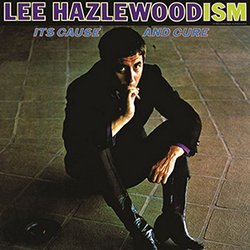| All Artists: Lee Hazlewood Title: It's Cause & Cure Members Wishing: 3 Total Copies: 0 Label: LIGHT IN THE ATTIC Release Date: 11/20/2015 Album Type: Original recording remastered Genres: Country, Folk, Pop Style: Classic Country Number of Discs: 1 SwapaCD Credits: 1 UPC: 826853013222 |
Search - Lee Hazlewood :: It's Cause & Cure
 | Lee Hazlewood It's Cause & Cure Genres: Country, Folk, Pop
Album remastered from the original tapes with bonus tracks. Liner notes booklet with exclusive interviews and archive photos. The mid-to-late '60s were strange days for Lee Hazlewood. Having struck gold as songwriter and v... more » |
Larger Image |
CD Details
Synopsis
Product Description
Album remastered from the original tapes with bonus tracks. Liner notes booklet with exclusive interviews and archive photos. The mid-to-late '60s were strange days for Lee Hazlewood. Having struck gold as songwriter and vocal foil for Nancy Sinatra, he signed up to MGM as an artist in his own right, and between 1966 and 1968, produced three ambitious solo albums that were eclectic, idiosyncratic, and most of all, unpredictable. It was a happy time for Lee; his music was hot on the charts, he was fully immersed in his collaboration with his muse, Suzi Jane Hokom. The second of his MGM trilogy-1967's peculiarly named Lee Hazlewoodism: It's Cause And Cure-took on countrified French ye-ye ("The Girls In Paris"), a tale of a young bullfighter built on Spanish guitar and choral cowboys ("Jose"), a string-drenched song about the passing of time ("The Old Man And His Guitar"), and a western epic about a Native American tribe ("The Nights"). And that was just the first four tracks. Elsewhere, the honky tonk madness of "Suzi Jane Is Back In Town," the Byrds-like jangle of "In Our Time" and-in the bonus tracks-an instrumental named "Batman" confirm this to be one of Hazlewood's most far-ranging, far-out LPs ever. It's the result of two main factors: ambition-to top Phil Spector, primarily-and cash, which paid for orchestras, plush studios, and the inestimable talents of arranger Billy Strange. "I think the big sound of those records came out of the Spector thing," says Hokom, in the new liner notes. "If you can have a big sound and you have money to burn... it was a flamboyancy."

 Track Listings (13) - Disc #1
Track Listings (13) - Disc #1